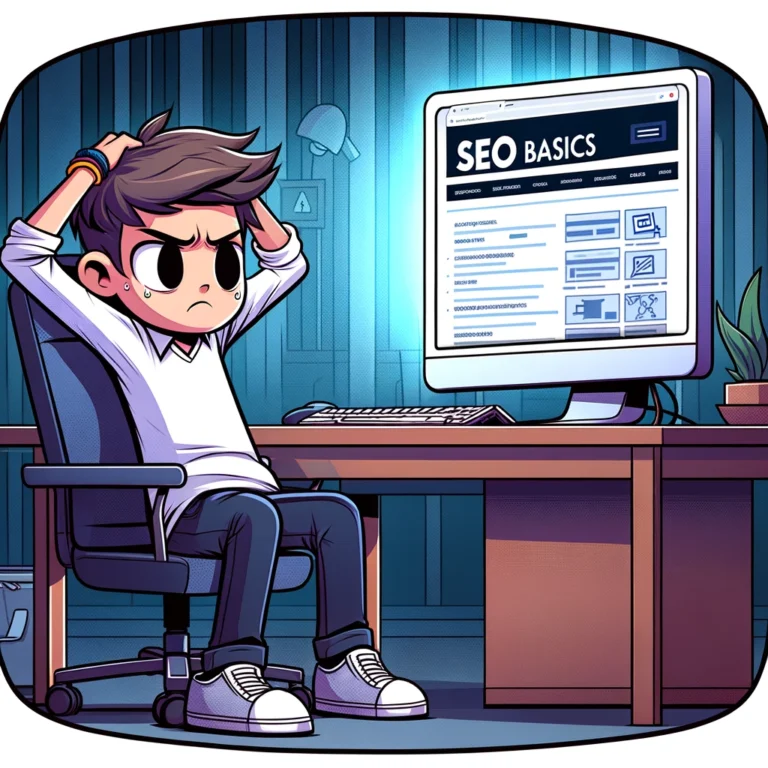Understanding the Fundamentals of SEO
Before diving into the specifics of building an SEO checklist, it’s crucial to grasp the basics of Search Engine Optimization (SEO). At its core, SEO is about enhancing the visibility of your website in search engine results, improving your chances of attracting more visitors organically. This involves optimizing various elements of your site, including content, technical setup, and user experience.
Setting Clear SEO Goals
An effective SEO checklist starts with clear objectives. What do you want to achieve with your SEO efforts? Are you looking to increase traffic, generate leads, boost sales, or improve engagement? Setting specific, measurable goals helps you create a focused SEO strategy and measure its effectiveness over time.
Technical SEO: Ensuring a Strong Foundation
Technical SEO is the backbone of your search-optimized site. It ensures that search engines can crawl and index your website without any issues. Key aspects include:
Optimize Your Site Structure
A logical, clear site structure not only enhances user experience but also helps search engines understand your website’s content hierarchy. This organization allows for easier indexation and, potentially, better rankings.
Mobile Optimization
With the increasing prevalence of mobile browsing, your site must perform well on mobile devices. Google’s mobile-first indexing prioritizes the mobile version of your website for ranking. Ensuring that your website is responsive and loads quickly on all devices is paramount.
Improve Site Speed
Site speed is a critical ranking factor. Slow loading times frustrate users and increase bounce rates. Regularly check your site speed and optimize elements such as image sizes, server response times, and script handling.
Secure Your Website
Security is a top priority for search engines. Implementing HTTPS, for instance, not only secures your site but also gives it a slight ranking boost.
Content Optimization: The Heart of SEO
Content is king in the world of SEO. It’s the primary reason visitors come to your site, and it’s a crucial factor search engines use to rank your pages.
Conduct Keyword Research
Understand the language of your target audience by identifying the keywords they use to search for information related to your products or services. Tools like Google Keyword Planner can help you find relevant keywords.
Create Quality Content
Write well-researched, original content that adds value to your readers. Quality content is likely to attract more backlinks, which can significantly boost your site’s authority and rankings.
Optimize Metadata
Title tags and meta descriptions are critical as they influence how your site appears in search results. Make sure they are compelling, include relevant keywords, and encourage users to click through to your site.
Link Building: Expanding Your Web
Backlinks — links from other sites to yours — are a vital part of SEO. They act as endorsements, telling search engines that your content is valuable.
Earn Relevant Backlinks
Instead of focusing on quantity, aim for quality when it comes to backlinks. Get links from reputable and relevant sources by creating shareable content or engaging in guest blogging.
Regular Monitoring and Updating
SEO is not a one-time task but a continuous process. The search landscape changes frequently, and regular updates are necessary to maintain or improve your rankings.
Use Analytics
Monitor your SEO progress with tools like Google Analytics and Google Search Console. These tools provide insights into traffic sources, user behavior, and other critical data to help refine your SEO strategies.
Stay Updated with SEO Trends
SEO is an ever-evolving field. Algorithms updates by search engines can shift the effectiveness of your current strategies. Keep learning about the latest trends and best practices in SEO to stay ahead.By methodically following the components of this SEO checklist, you can elevate the online presence of your website. Remember, consistency and adaptability are key in the dynamic world of SEO. Regularly revisiting and revising your SEO strategies based on performance metrics and new trends will help secure and improve your site’s competitive position in search engine result pages (SERPs).

User Experience Optimization: A Priority for SEO
Beyond the mechanics and content, enhancing the user experience (UX) on your website plays a predominant role in SEO success. Google and other search engines prioritize sites that provide a superior user experience. Here are key points to ensure your website is not only user friendly but also optimized for search engines.
Simplify Navigation
A straightforward and intuitive navigation structure ensures that your visitors can find what they’re looking for with minimal effort. This includes having a consistent menu structure, logical page hierarchy, and clear labels. Improved navigability increases the time visitors spend on your site, reducing bounce rates and positively impacting your SEO outcomes.
Enhance Readability
Your website’s content should be easy to read and understand. Use clear, jargon-free language that resonates with your audience. Break down your content into smaller paragraphs complemented by subheadings, bullet points, and images. These elements help break up text, making it easier for users to scan through and absorb your content.
Incorporate Visuals
Images and videos not only make your site more attractive but also help in communicating your message effectively. However, ensure that all visuals are optimized — large files can slow down your site. Always include alt-text with images; this improves accessibility and provides search engines with context about the visual content.
Focus on Accessibility
Making your website accessible to people with disabilities is not just a legal requirement in many regions but also affects your SEO. Search engines favor websites that are accessible to a broader audience. Ensure your site uses a suitable color contrast ratio, is navigable via keyboard inputs, and all media have proper captions and descriptions.
Interactive Elements
Interactive elements like buttons or forms should be easy to use and responsive. They should function well on all devices, providing feedback when interacted with. For instance, a button should change appearance when clicked or hovered over. These small details enhance the user experience and contribute to the overall positive impression of your site, encouraging further interaction and visits. By focusing on these aspects of user experience, you align with SEO’s best practices that promote websites that are valuable, accessible, and engaging to users. Each improvement not only appeals to your visitors but also to search engines, which see your site as a quality source of information and a good candidate for higher rankings.
Optimize for Mobile Usage
In today’s digital age, a significant amount of web traffic comes from mobile devices. It’s crucial that your website is fully optimized for mobile usage to provide a seamless browsing experience on smartphones and tablets. This includes responsive design that adapts to different screen sizes and orientations, ensuring that text, images, and interactive elements look good and function properly across all devices. Mobile optimization also extends to load times; mobile users expect quick access, and search engines, like Google, prioritize sites that have faster mobile speeds. Prioritizing mobile-friendly design not only caters to user preferences but also complements your SEO efforts by aligning with algorithms that reward mobile-optimized websites.
Ensuring Mobile-Friendly Accessibility
As we conclude, it’s crucial to reiterate the importance of adapting to the inexorable shift towards mobile browsing. Today, more users than ever are accessing information, shopping, and interacting with content on the go. A mobile-optimized website doesn’t just elevate user experience but also plays a pivotal role in enhancing your website’s visibility and engagement. Embracing mobile-first design is not just about resizing content to fit smaller screens but also about rethinking user interaction on mobile devices. This includes touch-friendly navigation, readable fonts, and optimized images that load quickly and don’t consume unnecessary data. Additionally, implementing accelerated mobile pages (AMP) can further boost your site’s performance, significantly decreasing the load time and keeping your users happy and engaged. Remember, optimizing for mobile is a continuous process. As technology advances and user habits evolve, it will be important to stay updated with the latest developments and to implement these into your mobile strategy. By prioritizing a smooth, responsive, and fast-loading mobile experience, you’re placing your website on a solid foundation, ready to meet the demands of today’s mobile-centric world. Let’s ensure that everyone, regardless of device, can access, enjoy, and benefit from your content. After all, in the digital realm, accessibility equates to visibility, and visibility unlocks opportunities.
References:
- Clark, D., & Fry, L. (2022). Optimizing Your Online Presence: SEO Techniques for Sustained Success. Emerald Publishing.
- Kumar, A. (2021). “Impact of SEO on Digital Marketing: A Comprehensive Overview.” Journal of Digital Marketing Research, 15(4), pp. 118-134.
- Meyers, P. (2019). “The Evolving Algorithm: Google’s Changes and Their Impact on SEO Strategies.” Technology and Digital Media Review, 7(2), pp. 67-82.
- Nielsen, J., & Loranger, H. (2006). Prioritizing Web Usability. New Riders Publishing.
- Patel, N. (2020, June 15). “The Ultimate SEO Checklist for Website Owners.” Retrieved from https://neilpatel.com/blog/seo-checklist/
- Search Engine Land. (2021, November 5). “How To Create An SEO Strategy For 2022.” Retrieved from https://searchengineland.com
- Smithson, R., & Cheung, M. (2018). Search Engine Optimization: Strategies and Techniques. Routledge.
- Wright, A. (2023, January 10). “Essential SEO Trends and Strategies for 2023.” Retrieved from https://www.contentmarketinginstitute.com/seo-trends-strategies-2023



